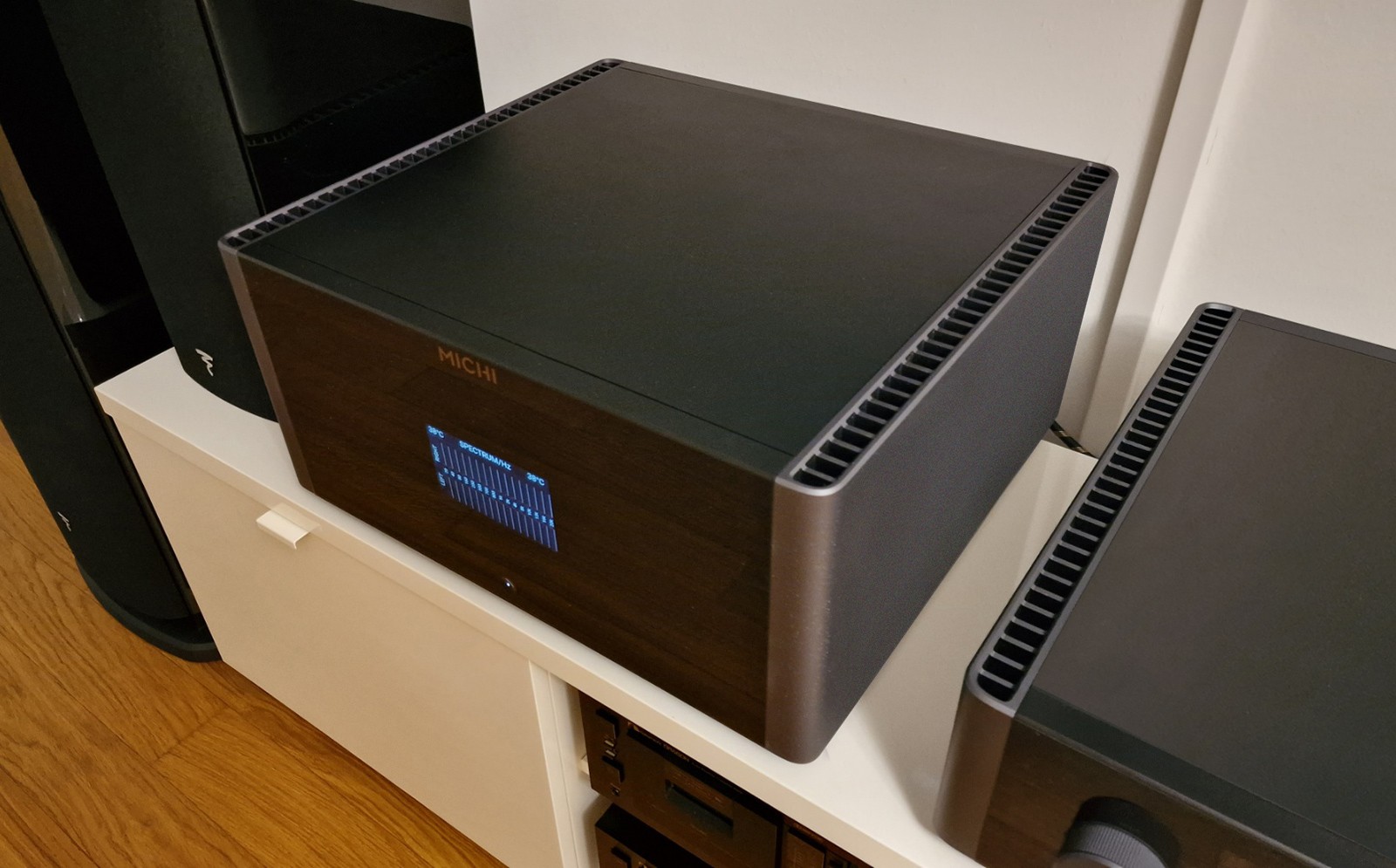Rotel is a company that’s gone about their business making high performance gear that is reasonably priced, in a relatively understated way. On one level, Rotel products have always been somewhat of a gateway product for some, and a great destination for others.
If you’ve started your hifi journey with NAD, Cambridge, or Music Hall, (or maybe something else along those lines) and would like to step up a few notches, but perhaps not ready to commit to vacuum tubes – Rotel is always a solid choice.
The launch of their new Michi line is something completely different. With the P5 preamplifier at $4,000 and the S5 stereo power amplifier at $7,000 (and there are a pair of monoblocks at $7k each, if you just have to have more power), this pair offers a serious insight into mega high end sound at an approachable price indeed.
Let’s begin at the source
Unboxing the P5 preamp hints at what to expect. It’s heavy. 50 pounds heavy. Power amplifier heavy. Peeking at the internal view on the Rotel website confirms this is not just some fancy casework filled with air. The massive power supply capacitors are flanked by a fully populated circuit board, (with a lot of discrete components) and all the switching relays at the back of the chassis, to minimize noise. It’s as beautiful on the inside as it is on the outside.
Speaking of sources, the P5 is a true control center in every sense of the word. It features a DAC with the ability to decode DSD, MQA, and PCM files up to 32/384, so it is more than reasonably future proof. While there is no balanced XLR digital in, there are three optical and three RCA S/Pdif inputs as well as an Ethernet port and a USB input. As a bonus, it also features an aptX/Bluetooth input, so you can stream from your mobile device. (and so can your guests)
Vinyl enthusiasts will appreciate the option of MM or MC cartridge compatibility, selectable from the front panel, though there is only one phono input around back. As versatile as the P5 is, it’s a shame that Rotel did not provide separate MM and MC inputs. Not a deal breaker.
With two more balanced XLR inputs and four more RCA inputs, even those of you with an FM tuner, and a couple of tape decks won’t run out of input jacks. Rotel also includes two pairs of balanced XLR outputs, three RCA outputs and a pair of mono subwoofer outputs. In short, they’ve got you covered.
Around front, it’s clean, crisp and concise. The front panel display is an off white that goes easy on the eyes and is very easy to read. Both controls (selector on left, and volume on right) turn smoothly should you feel the need to engage manually, but the multi-function remote is the way to roll, especially if you have a lot of sources plugged in. Bonus points – there’s a headphone jack just below the volume control, and it worked well with everything we had on hand, from original Koss Pro –AAAs to the latest from Focal. The Utopia phones cost more than the P5, yet this preamplifier does a great job with personal listening duties. The sweet spot here is probably phones in the $200 – $1,000 range, which covers a lot of ground.
Spinning a few records
Another slightly anomalous behavior is the MC phono input, with loading fixed at 100 ohms. We can’t call the engineers at Rotel bad Smurfs, as a few other manufacturers (Luxman comes to mind) does this as well. And there are a number of great MC cartridges you can work with, so this isn’t the end of the world. We did all of our analog listening with the Technics SL-1200GAE and a Denon DL-103r – a nearly perfect combination. However, this is a preamplifier that you will chose a cartridge for, because variable loading is not an option.
That said, working within given parameters, the Technics/Denon combination is a superb match for the P5. While specs don’t tell the whole story, the phono stage is claimed to have a S/N ratio of 80dB, and suffice to say, it is quiet. Putting the P5 to the immediate test and breaking out the classical LPs shows off just how quiet this combination is.
Putting this in context, think of the P5 as a $2,000 linestage, a $1,000 DAC, and a $1,000 phonostage, with a bonus headphone amp thrown in. Not to mention, there are three three extra power cords and sets of interconnects you don’t have to buy. And the satisfaction of knowing it all works together perfectly. That’s value. Comparing the on board phono in the P5 to anything we’ve listened to in the last few years, it’s safe to say it’s as good or better than any outboard phono stage in the $600 – $800 range. Remember, you’re still going to need even a modest pair of interconnects… The only advantage to an outboard phono is possibly a wider range of MC loading options, but for convenience and high performance all on one chassis, the P5 can’t be beat.
Source: tonepublications.com/
Specification
| Category | HiFi Components |
|---|---|
| Sub Category | Amplifiers |













